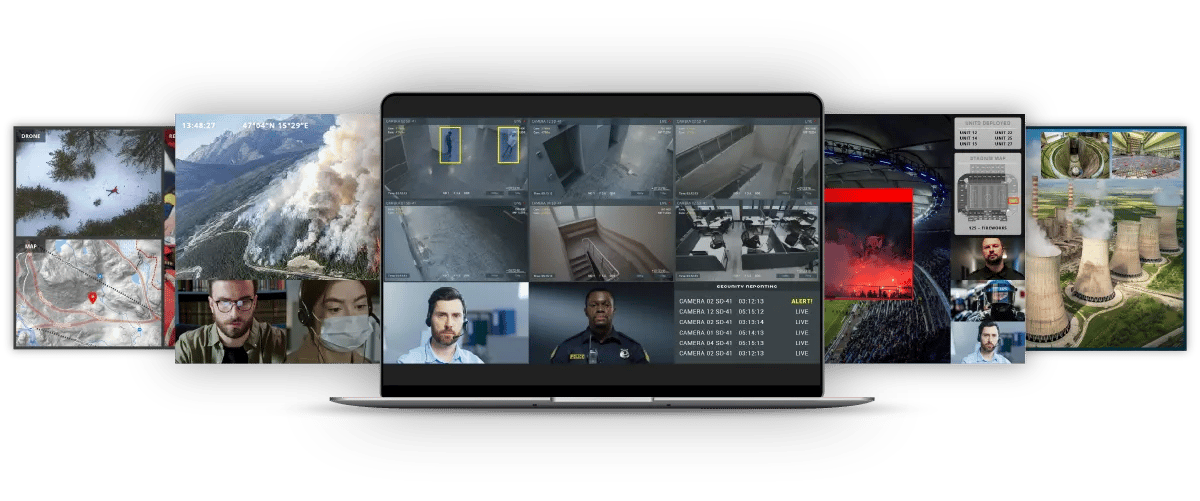Long before COVID-19 lockdowns forced the flights of the workforce to remote environments, the rampant globalization of the economy was contributing to the proliferation of virtual meetings and seminars in almost every industry, from education and medicine to manufacturing and tech.
During the pandemic, the move toward remote conferencing accelerated apace, and now that we seem to be entering the post-pandemic era, it seems unlikely that the move to virtual conferencing will abate anytime soon.
However, no matter how much experience you may have had with virtual meetings and seminars, whether as a host or attendee, there are still several important factors to take into consideration moving forward. Understanding how to navigate the unique challenges of leading a large virtual forum is becoming increasingly important as technological advances continue to increase attendance capacities.
This article discusses some of the most important things you can do to prepare for your next multi-person virtual meeting or seminar.
No matter how well prepared you are to lead the virtual meeting, it’s not going to be a success if you don’t have the proper technology in place. Not only must your technology be able to accommodate high volumes, but it should also be able to be deployed through an array of devices, including smartphones and tablets, without losing functionality or compromising the attendee experience.
Similarly, your technology should be capable of accommodating audio-only participants, a capability that has traditionally been problematic due to bandwidth challenges.
In addition to ensuring that you have the technical platform you need to seamlessly host a large audience connecting on a variety of devices, you also need to ensure that you’re comfortable with setting up, using, and even troubleshooting the tech on the fly and with scores or even hundreds of eyes (virtually) upon you.
That means you need to practice with the technology. Do this early and often. And whenever possible, team up with a colleague to give the meeting a trial run across various platforms. You or your partner can test access, as well as audio and video quality, on both PC and mobile devices to ensure that your audience is getting the best possible experience, no matter how they connect.
Harnessing the Power of Inclusivity
One of the greatest assets of the virtual meeting and seminar is that it truly can increase inclusivity and diversity in your meeting space. It means, after all, that your conferences are no longer limited to or defined by geography.
The entire world is opened up to your webinar, inviting participants from a seemingly endless variety of cultures and contexts. To make the most of this, though, you need to prepare for the demands of cross-cultural communications. For instance, you will likely need to integrate translation technologies, especially when you are hosting a multinational audience.
Similarly, you should offer captioning opportunities for attendees who may be Deaf or hard of hearing, as well as screen reading or audio narration for participants who are blind or have low vision.
Set an Agenda, But Be Flexible
If you’re hosting a large virtual meeting, you have to strike a fine balance between not having enough direction and purpose and being so agenda-driven that you lose spontaneity and miss out on important, but unexpected, opportunities.
A good strategy is to identify and communicate the purpose and goals of the meeting to attendees ahead of time, inviting and incorporating their feedback on the meeting’s agenda. Before the meeting, be sure to share this itinerary with your audience in enough time for them to review and familiarize themselves with it.
As you develop your agenda, though, make sure to include ample time for questions and answers. Ideally, this shouldn’t only be reserved for the end of the meeting but should be integrated throughout it and used as a means to facilitate conversation.
In addition, you should give your audience the capability to communicate in real-time both with you and with one another. At a minimum, enabling attendees to virtually “raise their hand” or otherwise signal you when they have a question or comment is a great way to foster collaboration. Likewise, enabling an audience chat, which you or a colleague can closely monitor, will inspire engagement and enable you to better read the room, a necessity in the virtual space, where it can be difficult to assess your audience’s body language and facial cues.
By preparing in advance and, in particular, by encouraging engagement and feedback both before and during the meeting, you will also be more likely to meet one of the most important needs of our digital transformation era: the need to get coworkers, colleagues, clients, and peers on board with this new way of meeting, collaborating, working, and learning.
The Takeaway
Virtual meetings and seminars may well be the future of work. As virtual audiences grow, though, so too much your virtual hosting skills. This should include not only enhancements to your remote conferencing technologies but also to your virtual presentation strategies.



